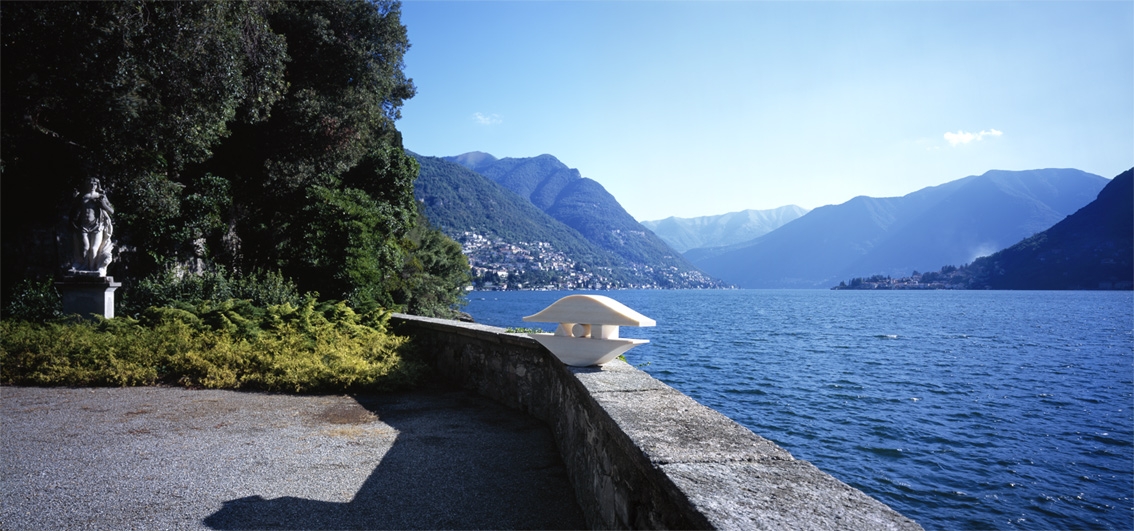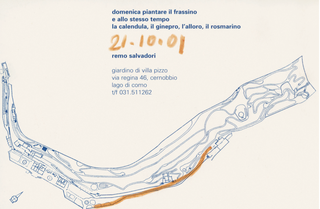An aesthetic-symbolic valency that is both autonomous from, and yet in relation with, its immediate surroundings
"Villa Pizzo, a historic residence at Cernobbio, on Lake Como, hosted the opening of the second garden created by Salvadori: La domenica piantare il frassino e allo stesso tempo la calendula, il ginepro, l’alloro, il rosmarino, 2001. It is composed of an Excelsior ash and a Manna ash, planted at two points in the park in different moments, accompanied by the other botanical varieties indicated in the title, and a sculpture in Candoglia marble whose form, in the two outer parts, resembles that of an eye containing a prism with a triangular base, a cylinder and a parallelepiped—respectively three-dimensional developments of the triangle, circle and square, the three basic forms of Euclidean geometry. As in the first 'garden of the week' made in 1998 at the Castle of Santa Maria Novella in Fiano-Certaldo, the botanical elements are accompanied by a sculptural part envisioned by Salvadori, which as Pier Luigi Tazzi asserts 'takes on an aesthetic-symbolic valency that is both autonomous from, and yet in relation with, its immediate surroundings.' The plant species, in particular, are chosen on the basis of their insertion inside a system of correspondences, in which they are linked to the days of the week, the planets, the metals, the colors, and the organs of the human body, reflecting the artist’s holistic vision."
(Laura Conconi, Maria Corti, "Chronology", in Remo Salvadori, ed. Antonella Soldaini, [Milan: Skira, 2025], 362-363)



Contatti
archivio@remosalvadori.it